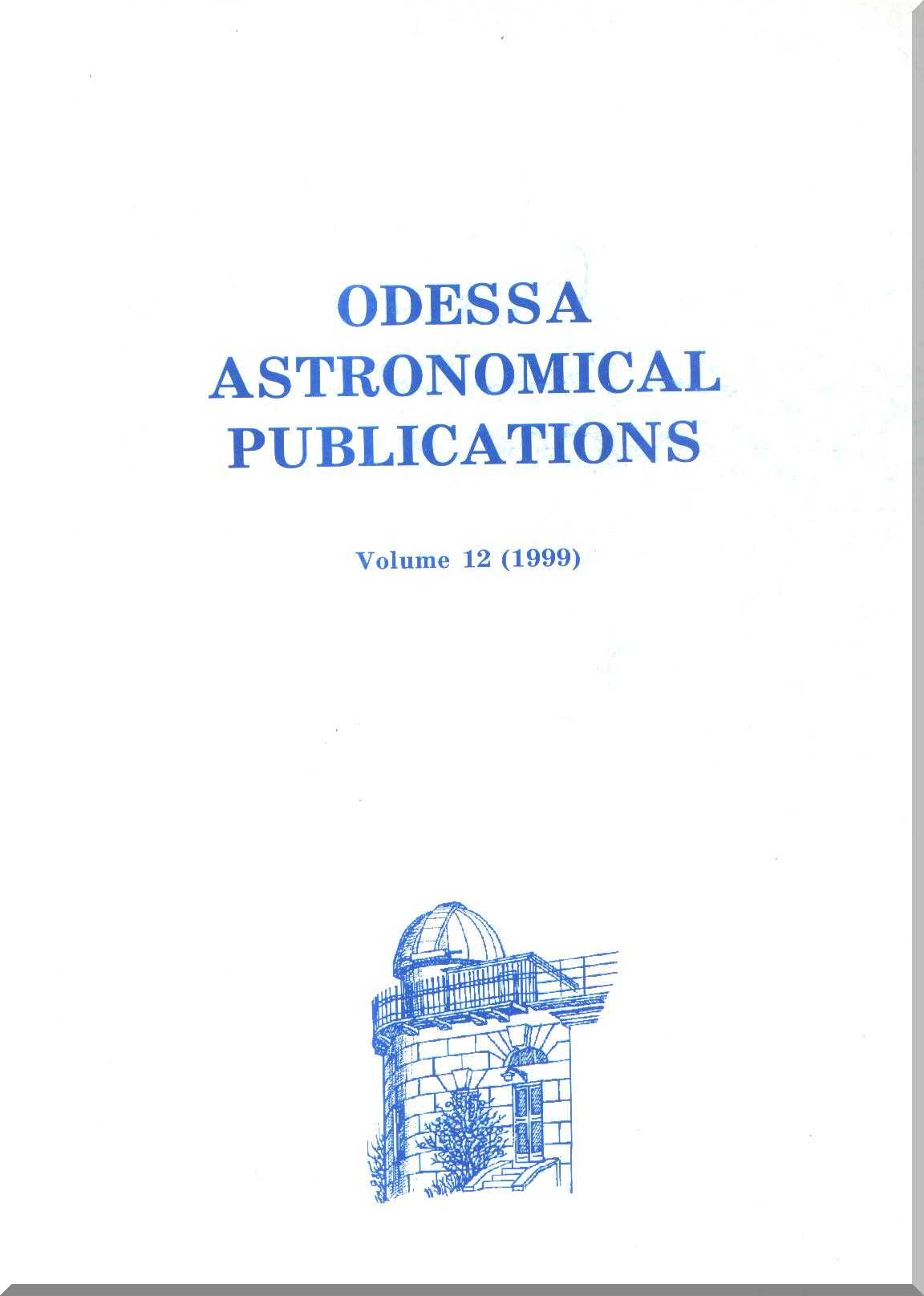ON THE POSSIBILITY FOR MEASURING THE HUBBLE CONSTANT FROM OPTICAL-TO-NIR VARIABILITY TIME DELAY IN AGNS
DOI:
https://doi.org/10.18524/1810-4215.1999.12.93109Ключові слова:
AGNs, Sy1Gs, QSOs, individual, NGC4151, 7469, 3786, 3783, Fairal 9, GQ Comae, Cosmolgy, H<sub>0</sub> determination.Анотація
The Optical-to-Near-infrared variability time delay have already been reported for a small number (∼ 7) of AGNs and has been firmly established only for 5 of them. The time delay is probably increasing with the IR wavelengths. The most naturally this time delay can be interpreted by the model where IR emission is attributed to circumnuclear dust heated by the nuclear radiation. In given model a suggestion on narrowness of the near-infrared (NIR) emission region is quite natural, as far as the dust can be not saved on distances from the nucleus closer then some critical value, on which it is reached the sublimation temperature for graphite particles (Barvainis, 1987). For NGC 4151 case it has been shown that the NIR region has a form of thin ring or torus. The radius of this ring correlates with level of the nucleus activity (Oknyanskij et al. 1999). This dependency of radius of the NIR emission region from luminosity reveals itself as under object variability (as in the case of NGC4151), and also when objects with high and low luminosity are considered. We assume that the observed time delays allow us to derive a redshift independent luminosity distances to AGNs and estimate a Hubble constant. Some problems of using this strategy for the Hubble constant determination are discussed.Посилання
Baribaud T., Aloin D., Glass I. S., Pealat D.: 1992, Astron. Astrophys., 256, 375.
Barvainis R.: 1987, Ap.J., 320, 537.
Barvainis R.: 1992, Ap.J., 400, 502.
Clavel J., Wamsteker W., Glass I. S.: 1989, Ap.J., 337, 236.
Collier S., Horn K., Wanders I., Peterson B. M.: 1999, MNRAS, 302, L24.
Glass I.S.: 1992, M.N.R.A.S., 256, 23P.
Glass I.S.: 1998, M.N.R.A.S., 297, 18.
Goodwin S.P., Gribbin J., Hendry M.A.: 1997, A.J., 114, 2212.
Freedman W. et al.: 1989, Ap.J.Suppl.Ser., 69, 763.
Lebofsky M.J., Reike G.H.: 1980 Nature, 284, 410.
Miyoshi M. et al.: 1995 Nature, 373, 127.
Nelson B.O.: 1996, Ap.J., 465, 87.
Oknyanskij V.O.: 1994, Astron. Lett., 19, 416.
Oknyanskij V.O.: 1999, Astron. Lett., 25, 483.
Penston M.V., Balonek, T. J., Barker, E. S. et al.: 1974, M.N.R.A.S, 159, 357.
Refsdal S.: 1964 MNRAS, 128, 295.
Sandage A. et al.: 1996, Ap.J., 460, L15.
Sanders D.B. et al.: 1989, it Ap.J., 347, 29.
Sitko M.L., Sitko A.K., Siemiginowska A., Szczerba R.: 1993, Ap.J., 409, 139.
Syunyaev R.A., Zel'dovich Y.B.: 1980, Ann. Rev. Astron. Ap., 18, 537.
##submission.downloads##
Опубліковано
Як цитувати
Номер
Розділ
Ліцензія
Авторське право (c) 2017 Odessa Astronomical Publications

Ця робота ліцензується відповідно до Creative Commons Attribution-NonCommercial 4.0 International License.
Відповідно Закону України про авторське право і суміжні права N 3792-XII від 23 грудня 1993 року
